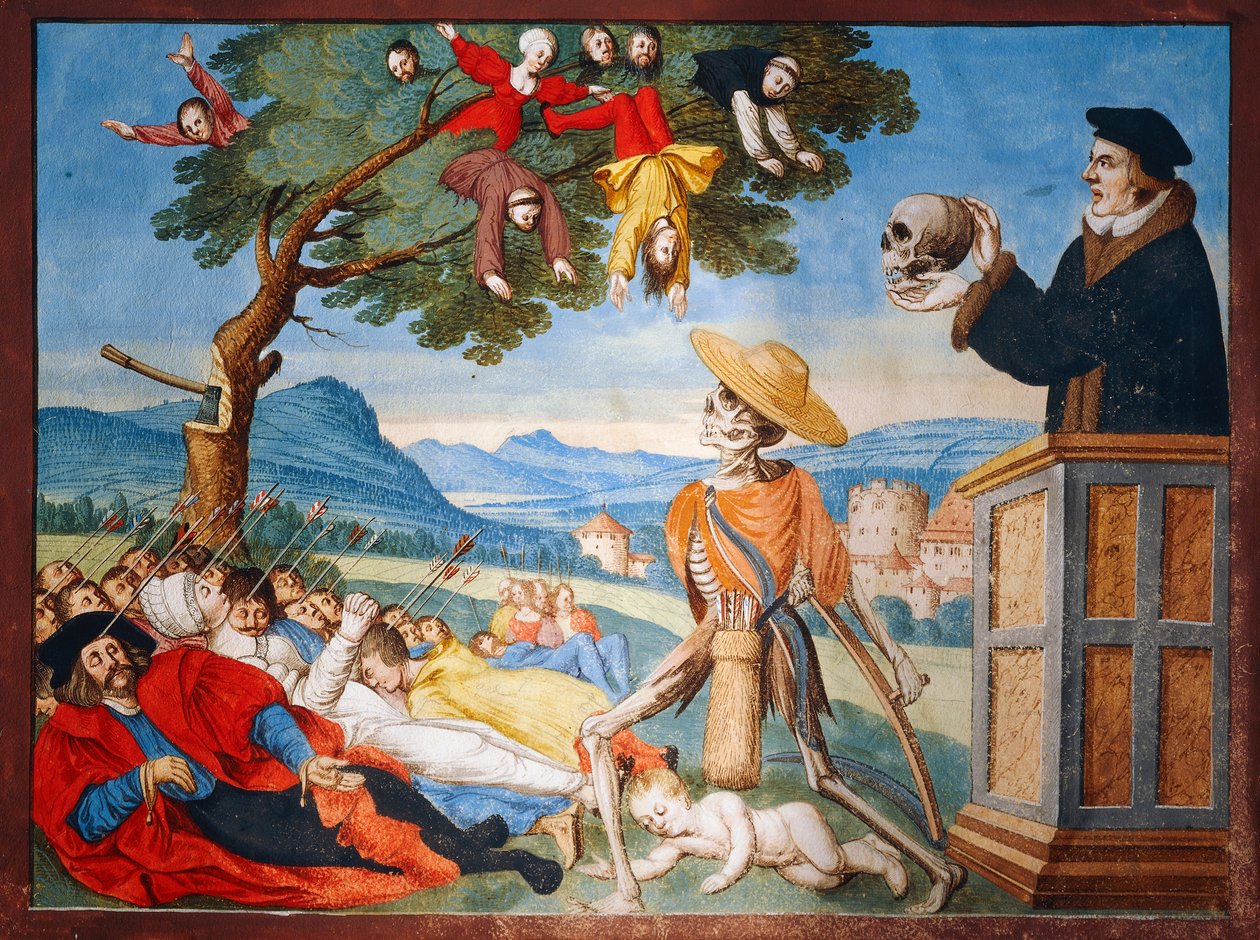Totentanz - The Medieval Europe "Dance of Death".
What is Totentanz?
The word Totentanz, translated as Dance of the Dead, is one of the darkest and most enduring motifs of medieval Europe. First appearing in the late 14th and 15th centuries, Totentanz was a macabre spectacle: skeletal figures leading humans of every rank—kings, priests, peasants—into an eternal dance with death.
At its core, Totentanz reminds us that death is the great equalizer. Whether royal or wretched, all must answer the same call. In the bleak aftermath of the Black Death and centuries of famine and war, it became a cultural mirror reflecting both terror and acceptance.

The Origin of Totentanz
The earliest traces of Totentanz come from France and Germany. One of the first documented depictions was a painted mural in Paris’s Cimetière des Innocents around 1424. Soon after, the motif spread across Europe, etched into church walls, cloisters, cemeteries, and manuscripts.
Totentanz gained traction after the devastation of the Black Death (1347–1351). Whole populations had been erased, and people longed for an explanation. In that silence, art provided one: Death as a dancing companion who comes for all, sparing none.
Totentanz - a moral theater
In a world plagued by uncertainty, Totentanz offered both terror and strange comfort.
-
Memento Mori: A visual sermon to remind the living of mortality.
-
Spiritual Warning: The Church used it to urge repentance and humility.
-
Social Commentary: Skeletons leading kings and popes alongside beggars hinted at a radical truth—status means nothing to Death.

Where & When Totentanz Spread
-
Germany & Switzerland: The term Totentanz became rooted here, with famous examples like the Basel Totentanz (1430s) and the Lübeck Marienkirche murals (1460s).
-
France: The Paris mural at Cimetière des Innocents became a blueprint for many others.
-
Across Europe: From Italy to Scandinavia, Totentanz took form in murals, frescoes, woodcuts, stained glass, and manuscripts, each echoing the same truth—death dances everywhere.
Totentanz Today
Though born in the Middle Ages, Totentanz still resonates with the gothic imagination. Its skeletal dancers live on in dark art, tattoos, literature, and music—from Liszt’s symphonic Totentanz to modern reinterpretations in heavy metal and gothic fashion.






